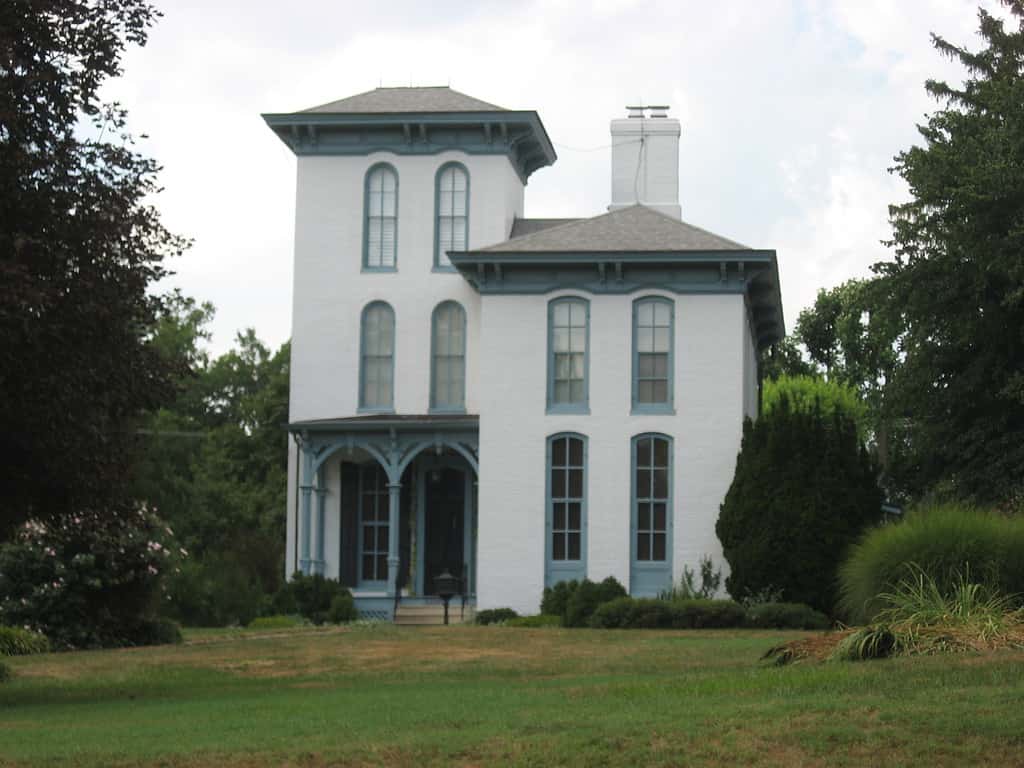Don't Drive on the Scariest Bridge in Illinois If You're Easily Spooked
The scariest bridge in Illinois isn’t the highest, the longest, or even the most narrow. It doesn’t cross a deep river or traverse a steep mountain pass. It’s not a suspension bridge, and it doesn’t sway back and forth as you cross it. No, this bridge is frightening, not because of its structure, but because of its lore.
Read on to hear all about the scariest bridge in Illinois and the spooky tales behind it.
What is the Scariest Bridge in Illinois?
It’s not the highest bridge; that would be the Abraham Lincoln Bridge. Nor is it the longest. That’s the Abraham Lincoln Bridge again. However, it could be argued the scariest bridge in Illinois is a small, low bridge that crosses a tiny creek in a border county in the southwestern part of the state.
Unofficially, the scariest bridge in Illinois is known as Acid Bridge. Covered in graffiti, it’s also sometimes referred to as Graffiti Bridge.
Where is Acid Bridge Located on a Map?
Officially, it’s the bridge on County Highway 32, crossing Silver Creek via Lebanon Road in Madison County, IL. It’s located in Troy, IL, about 30 minutes from St. Louis, MO.
Is Acid Bridge Haunted?
Built in 1970, today the bridge over Silver Creek is rated as structurally deficient and in need of repairs. But that’s not what makes it scary.
Acid Bridge can be found on one of the most allegedly haunted roads in the state. Lebanon Road, outside of Collinsville, IL, has the spooky reputation of being an entrance to the “seven gates of Hell.” The road contains seven old railroad bridges from the 1800s running over it. As local legend has it, if someone drives under all the bridges at midnight in a specific order, a portal to Hell will open. Today, the old rail bridges are popular with paranormal seekers. The bridges are easy to spot as they are all covered with graffiti.
Acid Bridge is not one of the gates of Hell, but has its own chilling stories. Many different ghost stories are circulating, but the most popular one involves a group of teenagers. The versions of the story vary but involve either a car crash or a shooting. Legend has it that a group of teenagers partying on the bridge were tragically killed. The rumor is that their ghosts haunt the bridge to this day.
Some visitors to the bridge have reported strange noises and eerie feelings. The creek below gives creepy vibes and appears to be a dumping ground for all sorts of trash including tires, cardboard boxes, and even a couch. (Note that we were unable to find any records of a wreck involving teenagers in the history of the bridge. There are, however, bulletholes in a guard rail.)
If you’d like to see Acid Bridge for yourself, check out the St. Louis Paranormal Society’s YouTube video below.
About Troy, IL

©Nyttend / Public domain
Troy is a small historical town with a population of around 10,000. A suburb of St. Louis, the city offers a suburban feel with an interesting background. Troy dates back to 1819 when settler John Jarvis sold his ten acres of land (which included a mill and a tavern) for $100 to James Riggen and David Hendershott. Riggen and Hendershott mapped out a community, and within a year, 120 people were living there. It was the first stagecoach stop for travelers coming to and from St. Louis and was a railroad stop in the late 1800s.
Wildlife Around Acid Bridge

©Tom Cantaffa/Shutterstock.com
Aside from spotting ghosts, there is a diverse amount of wildlife to see in southern Illinois. Although Troy, IL, is an urban area and part of the St. Louis Metro Area, there is plenty of wildlife roaming around Acid Bridge.
Some of the mammals you may see are white-tail deer, coyotes, raccoons, groundhogs, skunks, and opossums. You may even spot an armadillo. Although not abundant, they are known to live in the southern part of Illinois and have been making their way north. However don’t expect to see them very far beyond the southern half, as they can’t survive the frigid winters in northern Illinois.

©guentermanaus/Shutterstock.com
As for insects, monarchs begin arriving in late spring from their winter grounds in Mexico to lay eggs on milkweeds. Other insects you may spot are bumble bees, eastern tiger swallowtails, common buckeye, and Asian ladybugs.
Bird species are also diverse in the area. Although Canadian geese are abundant, you are also likely to spot many other species, including American robins, northern cardinals, red-shouldered hawks, great blue herons, and mourning doves.









